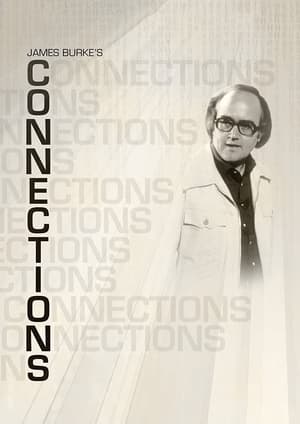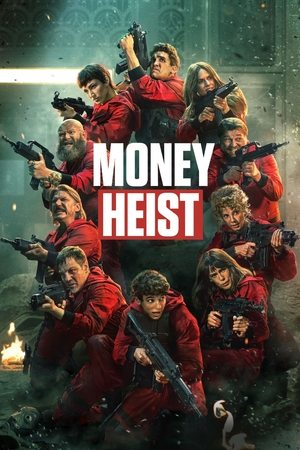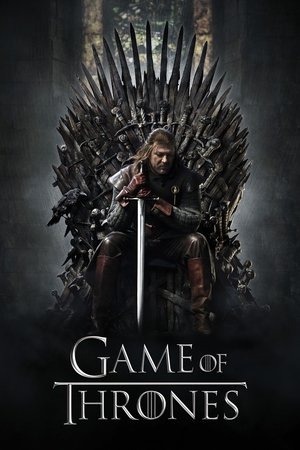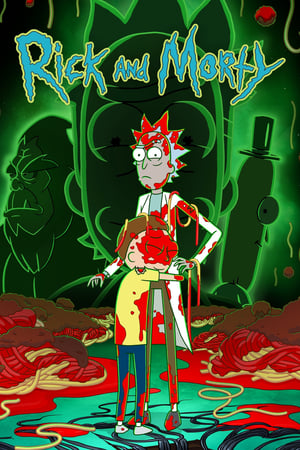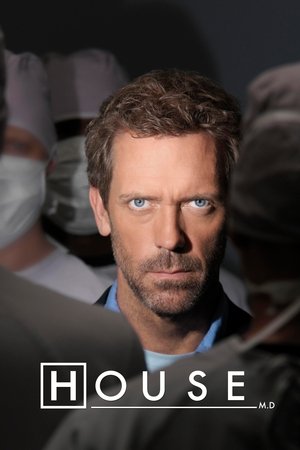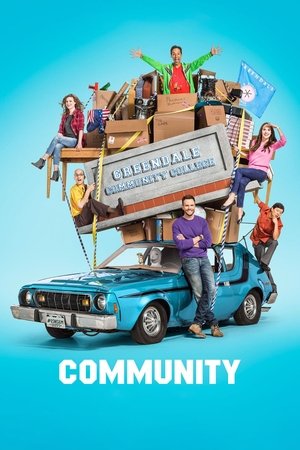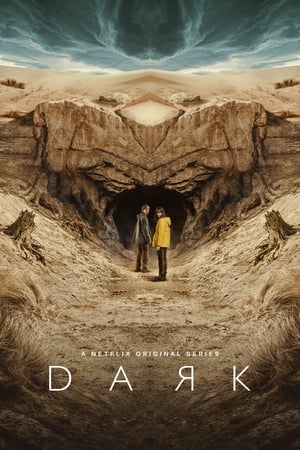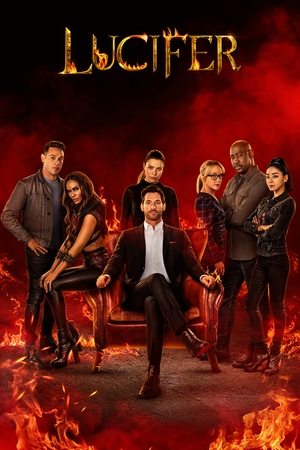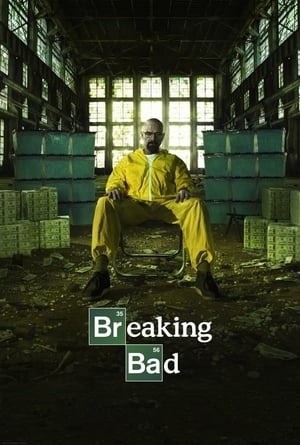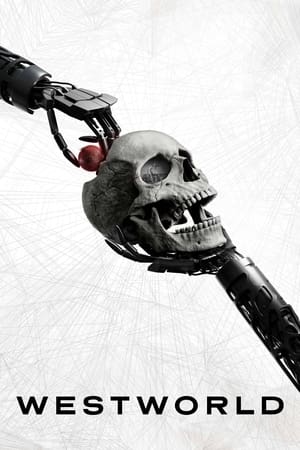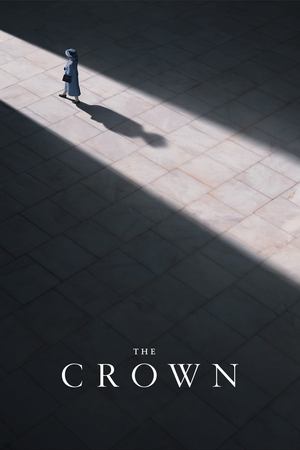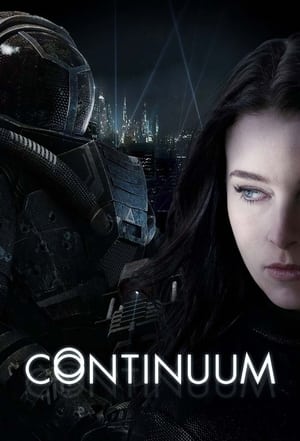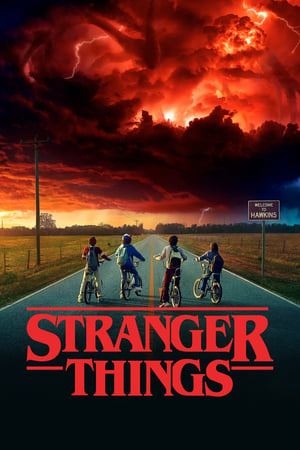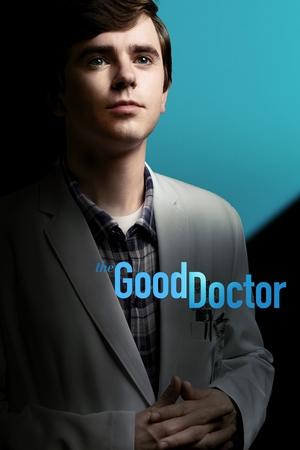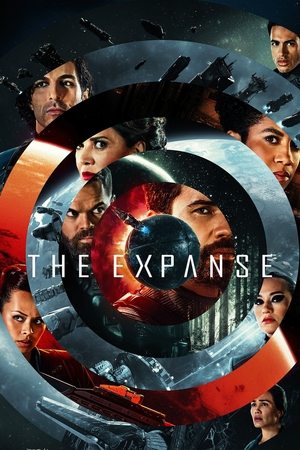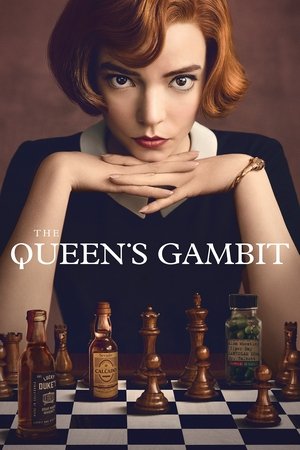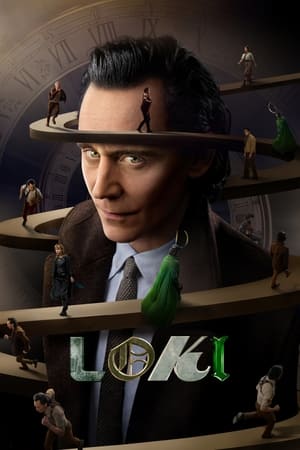Connections
Taking an interdisciplinary approach to the history of science and invention, Connections explores an "Alternative View of Change" that rejects the conventional linear and teleological view of historical progress. To demonstrate this view, Burke begins each episode with a particular event or innovation in the past (usually ancient or medieval) and traces a path from that event through a series of connections to a fundamental and essential aspect of the modern world.
Type: tv
Season: 5
Episode: N/A
Duration: N/A minutes
Release: 1978-10-17
Rating: 10
Season 1 - Connections
1978-10-17
Both the beginning and the end of the story are here. The end is our present dependence on complex technological networks illustrated by the NYC power blackouts. Life came almost to a standstill: support systems taken for granted failed. How did we become so helpless? Technology originated with the plow and agriculture. Each invention demands its own follow-up: once started, it is hard to stop. This segment ends in Kuwait, where society has leapt from ancient Egypt to the technology of today in 30 years.
1978-10-24
How did a test of gold's purity revolutionize the world 2500 years ago and lead to the atomic bomb? Standardizing precious metal in coins stimulated trade from Greece to Persia, causing the construction of a huge commercial center and library at Alexandria. This wealth of nautical knowledge aided navigators 14 centuries later. Mariners discovered that the compass's magnetized needle did not point directly north. Investigations into the nature of magnetism led to the discovery of electricity, radar and to the atomic bomb.
1978-10-31
Telecommunications exist because the Normans wore stirrups at the Battle of Hastings- a simple advance that caused a revolution in the increasingly expensive science of warfare. Europe turned its attention to making money to wage wars. As mine shafts were dug deeper, they became flooded, stimulating scientists like Galileo to investigate vacuums, air pressure and other natural laws to mine deeper silver. This led to the discovery of electricity and magnetism's relationship and to the development of radio, and deep space telecommunications that may enable contact with galactic civilizations.
1978-11-07
Each development in the organization of systems (political, economic, mechanical, electronic)influences the next, by logic, by genius, by chance, or by utterly unforeseen events. The transition from the Middle ages to the Renaissance was influenced by the rise of commercialism, a sudden change in climate, famine and the Black Death, which set the stage for the invention of the printing press.
1978-11-14
The power to see into the future with computers originally rested with priest-astronomers who knew the proper times to plant and harvest. The constellations influenced life spectacularly, particularly when the ailing Caliph of Baghdad was cured by an astrologer using Greek lore. His ancient medical secrets were translated and spread throughout Europe, ushering in an era of scientific inquiry. The need for more precise measuring devices in navigation gave rise to the pendulum clock, the telescope, forged steel and interchangeable machine parts-the basis of modern industrial system.
1978-11-21
A dramatically colder climate gripped Europe during the 13th century profoundly affecting the course of history for the next seven centuries. The changes in energy usage transformed architecture and forced the creation of new power sources. The coming of the Industrial Revolution, spurred on by advances in the steam engine, scarred England indelibly: but a moment in history later, gasoline-powered engines opened the way to the heavens.
1978-11-28
Often, materials discovered by accident alter the course of the world. In the 1600s Dutch commercial freighters controlled Atlantic trade routes. Competing British lines induced America to produce pitch to protect hulls of their royal vessels. This arrangement lasted until 1776, after which a Scottish inventor tried to produce pitch from coal tar. By the time he succeeded the navy was using copper instead. Subsequent experiments with coal tar yielded gaslight lamps, waterproofed garments, a brilliant mauve dye that established the German chemical industry and nylon, the first of the miracle plastics.
1978-12-05
When Napoleon marched huge forces across Europe, he needed an efficient way to store provisions. A Frenchman preserved sterilized food in empty champagne bottles, an idea modified by the British, who tried tin cans. Still, canned foods sometimes spoiled, which led to experiments with refrigeration. Later, it was discovered that gases may be stored at very low temperatures in a thermos flask, a device handy for picnics, for polar explorers and for, storing large quantities of liquid oxygen and hydrogen. When lit by a spark these gases can send rockets into space.
1978-12-12
What happens when you combine a carbon arc light, a billiard ball coating, a spoked wheel and consecutive images? Motion pictures! Complex and sometimes incredible events led to Thomas Edison's remarkable invention; the beginnings of limelight on a Irish mountain; George Eastman's production of celluloid from the slightly explosive gun cotton; the ""magic lantern"" of an Austrian ballistics teacher. Then Eadweard Muybridge settled a bet in 1872 by photographs; does a horse raise all four feet when galloping? (Yes.) Today moving pictures, together with television, are enormously powerful mass media. Have we become trapped by our own technology?
1978-12-19
"Why did we do it this way?" Essential moments from the previous programs are reviewed to illustrate the common factors that make for change. Will they go on operating to affect our futures? And if so, can we recognize them? The second half looks at the extent to which we have become increasingly incapable of understanding how change occurs in our complex world and at why we are in such a predicament. Finally, there is a look ahead to the need for radical change in the availability and use of information in the future, if we are to remain in control of our destinies.
Season 2 - Connections
1994-01-02
What do all these things have in common—three grandfathers' lifetimes, two revolutions, 1750 Cornish steam engines for Cornwall's tin mines, water in mines, pumps, steam engines, Watt's copier, carbon paper, matches, phosphorus fertiliser, trains and gene-pool mixing, travelling salesmen, 24-hour production, educated women, the telephone, high-rise buildings, Damascus's swords, steel, diamond, carborundum, graphite, oscilloscope, television, Apollo space program, X-ray crystallography, DNA and gene therapy? You will learn these things in the first episode of Connections2, "Revolutions".
1994-01-16
What do these have in common – Freud, lifestyle crisis, electric shock therapy, hypnotherapy, magnetism, phrenology, penology, physiology, synthetic dyes, the Bunsen burner, absorption, Fraunhofer lines, astronomical telescopes, chromatic aberrations, and surveying? Follow James Burke on the trail of discovering the connections between these and others in "Sentimental Journeys".
1994-02-06
James Burke explains the relationship between hot air balloons and laughing gas, and goes on to surgery, hydraulic-water gardens, hydraulic rams, tunneling through the Alps, the Orient Express, nitroglycerin, heart attacks and headaches, aspirin, carbolic acid, disinfectants, Maybach-Gottlieb Daimler-Mercedes, carburetors, helicopters, typewriters, punch cards, and IBM.
1994-02-20
This episode starts with a billiard ball and ends with a billiard ball. Along the way, Burke examines Georgius Agricola's De Re Metallica, how mining supported war, the role of money, the Spanish Armada, large ships, problems posed by a wood shortage, glass making, coal, plate glass, mirrors, the sextant, the discovery of granite, and seashells in the mountains, which enabled a new view of the age of the earth, and Darwin's theory of evolution, Francis Galton's Eugenics, and the forensic use of fingerprints.
1994-03-06
How do space shuttle landings start with the vacuum which was forbidden by the Church? Burke takes us on an adventure with barometers, weather forecasting, muddy and blacktop roads, rain runoff, sewage, a cholera epidemic, hygiene, plumbing, ceramics, vacuum pumps, compressed-air drills, tunnels in the Alps, train air brakes, hydroelectric power, the electric motor, Galvani's muscle-electricity connection, Volta's battery, and gyroscopes.
1994-03-20
The past in this case starts with the tea in Dutch-ruled India, examines the Japanese tea ceremony, Zen Buddhism, porcelain, the architecture of Florence, Delftware, Wedgwood, Free Masons, secret codes, radio-telephones, cosmic background radiation and—finally – radio astronomy, which listens to "Echoes of the Past".
1994-04-03
Another series of discoveries examined by Burke includes Eastman Kodak's Brownie, the disappearing elephant scare of 1867, billiard balls, celluloid as a substitute for ivory, false teeth that explode, gun cotton, double shot sound of a bullet, Mach's shock wave, aerodynamics, nuclear bombs, Einstein's relativity, Einstein's selenium, movie talkies, the vacuum tube amplifier, radio, railroad's use of wood, coal tar, gas lights, creosote, rubber, the Zeppelin, the automobile, and finally how Adeline vulcanises tires.
1994-04-17
Burke shows how to get from sugar to atomic weapons by two totally independent paths. The first involves African slaves, Abolitionist societies, Sampson Lloyd II, wire, suspension bridges, galvanised wire, settlement of the Wild West, barbed wire, canned corn, and cadmium. The second path involves sweet tea, rum, a double boiler, the steam engine, Matthew Boulton, English currency, the pantograph, electroplating, and cathode ray tubes.
1994-05-08
The connection between polyethylene and Big Ben is a few degrees of separation, so let us recount them: polyethylene, radar, soap, artificial dyes, color perception, tapestries, Far East goods, fake lacquer furniture, search for shorter route to Japan, Hudson in Greenland, the discovery of plentiful whales, printing the Bible, Mercator map, Martin Luther's protest, star tables, Earth as a flattened sphere, and George Graham's clock which of course leads to Big Ben.
1994-05-22
James Burke provides evidence that history does repeat itself by examining the likes of black and white movies, conquistadors, Peruvian Incas, small pox, settlements that look like Spain's cities, the gold abundance ending up in Belgium, Antwerp, colony exploitation, the practice of burying treasure to avoid pirates, Port Royal's pirates, earthquakes, the College of William and Mary, military discipline, Alexander Humboldt's observation on the environment, Ratzel's superstate Lebensraum, and Haushofer's world domination.
1994-05-22
A dream of utopia is followed from microchips to Singapore, from the transistor to its most important element, germanium, to Ming vases and cobalt fakes (which contribute to the blue in blue tiles used in special Islamic places), and mosaics in Byzantium, the donation of Constantine, Portuguese navigation by stars, the "discovery" of Brazil, Holland's tolerance, diamond merchants, optics, microscopes, beasts of science, Frankenstein's monster, and finally New Harmony.
1994-06-05
Burke starts out in a spice market in Istanbul where you can find hot pickle, recounts the taking of Constantinople by the Turks in 1453,
1994-06-05
The Big Spin is what California's lottery TV show is called. And lottery being a game of chance, from here Burke takes us through Alexander Fleming's chance discovery of penicillin, to Rudolf Virchow's observation that contaminated water is related to health, to Schliemann's search for the City of Troy, the theft of a discovered treasure, and to Virchow's criminology. From there we proceed to anthropology, the classification of life forms, Francis Bacon, the statistics of mortality, life expectancy, statistical math, Priestley's carbonated water, the soda fountain, petroleum oil, some French fossil hunters, seismology, and impossible-to-predict earthquakes.
1994-07-03
A permanent wave in ladies' hair is aided by curlers, and this leads us to explore borax, taking us to Switzerland, Johann Sutter's scam, and Sutter's Mill, and that means the discovery of gold leading to the 1848 California gold rush. Americans then cut into the English tea market with the aide of the Yankee Clipper, which played a big role in the gold rush. A fungus from America created the Irish potato famine, resulting in the importing of corn, but laws prevented the Yankee clippers from being used until it was too late to save Ireland. Finally, the laws were changed, leading to franking fraud, which was overcome by special printing of postage stamps, which gave us wallpaper, and a thickening agent, leading us to the Canal du Midi, the American war for independence, resettlement in Scotland, highlanders in Nova Scotia and—finally—the RMS Queen Elizabeth II.
1994-07-17
Jethro Tull, a sick English lawyer, recuperates sipping wine and contributes the hoe to help fix farming problems. Farm production is not going so well in France, either. François Quesnay (doctor of King Louis XV's mistress) suggests a solution based on his complete misunderstanding of English farming techniques. Laissez-faire was his erroneous idea. It also got the people to demand social laissez-faire. His inciting the public's rebellion against the monarchy led to France's invasion of Geneva. The French Revolution led to personal exploration of the senses. Berlin doctor Müller reasoned that each sense does a different job and the nervous system analyses what the senses are telling one. Helmholtz's pupil, Hertz, discovered that sound and electricity have a wave-like nature in common. Guglielmo Marconi takes this a step further by sending and receiving signals very long distances across the earth. The BBC realised that the radio waves were reflected by the ionosphere, and Hess was the
1994-07-31
1994-08-07
1994-08-14
Season 3 - Connections
1997-01-01
Electronic agents on the internet and wartime guns use feedback techniques discovered in the first place by Claude Bernard, whose vivisection experiments kick off animal rights movements called humane societies that really start out as lifeboat crews rescuing people from all the shipwrecks happening because of all the extra ships out there that are using Matthew Maury's data on wind and currents transmitted by the radio telegraph, invented by Samuel Morse, who is also a painter whose hero is Washington Allston, who spends time in Italy with Samuel Taylor Coleridge, who comes to Malta and spies for the governor Alexander Ball, who saved Admiral Horatio Nelson's skin so he can go head over heels for Emma Hamilton in Naples, resulting in an illegitimate son. Emma became notable in the Electrico-Magnetico Celestial Bed, where you go regain your fertility through electricity, and you can get more whisky thanks to Joseph Black, who determined the latent heat of vaporisation in steam. James W
1997-01-01
Remember the cornflakes from last episode? Because corncobs make adhesives to bond carborundum discovered by Edward Goodrich Acheson, otherwise known as silicon carbide, to grinding wheels used to grind lightbulbs, silicon carbide is also then used as protection against armour-piercing shells developed to hit tanks that start life as American tractors, which use diesel engines developed from funding from Krupp, who inspired Bismarck's welfare scheme based on Quetelet's statistics that inspired the Charles Babbage's difference engine, whose punch cards were used to rivet the SS Great Eastern, the monster ship that laid the transatlantic cable insulated with gutta-percha used to manufacture golf balls for factory managers in industrial Scotland, where James Watt had a run-in with Cavendish, whose protegee was James Macie, also called James Smithson, who caused all the row in the capitol building, so the money got used to set up a world-renowned institution named after James Macie's new f
1997-01-01
At the Smithsonian, we learn of electric crystals that help Pierre and Marie Curie discover what they call radium, and then Langevin uses the piezoelectric crystal to develop sonar that helps save Liberty ships (from German U-boats) put together with welding techniques using acetylene made with carbon arcs, also working the arc lights with clockwork regulators built by Foucault, whose pendulum helps him to take pictures of solar eclipses. Also thanks to ash from seaweed, interchangeable parts for clocks, the world of opera, and gurus, we get Einstein's theory of the gravity effect, which means Newton's universe is gone and you can drop the apple.
1997-01-01
Black holes in space, seen by the Hubble Telescope, brought into space with hydrazine fuel, which was a byproduct of fungicides for French vines, fuelled by quarantine conventions and money orders, American Express and Buffalo Bill, Vaudeville and French battles, Joan of Arc and the Inquisition, Jews welcomed by Turks, who lost to Maltese knights with surgeons trained on pictures by Titian, in Augsburg, where goldsmiths made French money to pay for tobacco. That triggered logarithms and slide rules made by clock makers, who also made pressure cookers that sterilised French beer kept cool by refrigerators that were also used to freeze meat and chill down paraffin wax for making objects invisible.
1997-01-01
Instant coffee gets off the ground in World War II and Jeeps lead to nylons and stocking machines smashed by Luddites, who were defended by Lord Byron, who meets John Galt in Turkey, avoiding the same blockade that inspires the "Star-Spangled Banner", which was really an English song all about a Greek poet discovered by a publisher whose son-in-law is pals with Joseph Justus Scaliger of chronology fame, whose military boss, Maurice, inspires Gustavus of Sweden, father of the runaway Christina, whose teacher René Descartes' mechanical universe inspires the book about brains by Willis, which is illustrated by the architect of St. Paul's, Christopher Wren, who dabbles in investments like John Law's Louisiana scam that ruins France, and Pierre Beaumarchais, and later the French finance minister Jacques Necker, whose daughter is the opinionated de Stael, whose romantic pals get Thomas Henry Huxley looking into jellyfish so he can defend Charles Darwin's theory of evolution. This demonstrate
1997-01-01
Alfred Russel Wallace, who studied beetles, Oliver Lodge and telegraphy, a radio designed by Reginald Fessenden, which was used by banana growers, studied by Augustin Pyramus de Candolle, who got the Swiss to use stamps on postcards with cartoons of Gothic houses of parliament, which in turn had been inspired by Johann Gottfried Herder's Romantic movement, inspired by fake Scottish poems. The exiled Scots escaped to North Carolina, producing turpentine, which helped make Chinese lacquer on tinplate, which is for what Jean-Baptiste Colbert had hoped. French navy decorator Pierre Paul Puget, who paints pictures of locations where barometers are the subject of investigation. The weather experimenter, whose brother's writing turns on Swift, whose pal Berkeley has visual theories that Young confirms while decoding ancient Egyptian from examples sketched by pencils invented by French balloonists. The American balloons are used for spying by Allan Pinkerton and his intrepid agent James McParl
1997-01-01
Professor Sir Alec Jeffries of Leicester University in England develops DNA profiling and schlieren photography used by Theodore von Karman to study aerodynamics and Anthony Fokker's airborne machine guns and the Red Baron and geographer Ferdinand von Richthofen and Johann Gottfried Herder's romantic ideas that start in Italy and paintings of actors and lighthouses and the War of Jenkins' Ear and Spanish gold and Alexander Monro and William Cheselden's skeleton drawings and astronomical poetry by friends of fishing aficionados who write books and Charles Cotton and sceptical wine-drinkers called Michel Eyquem, and Edward Jenner's cure for smallpox and J.J. Audubon and American bird painters and devious Russian real estate deals, and as a result in 1872, America gets a special place, the first national park, Yellowstone.
1997-01-01
Due to continental drift and Alfred Wegener's passion for mirages, magic images from the sister of King Arthur, whose chivalry supposedly triggers the medieval courtly love answers to adultery, which were in turn inspired by the free love ideas of the mystical Cathars, who lived next to the mystical cabalists who were fascinated with mystic numbers that spark Pico of Mirandola's interest in Hebrew, which then brings trouble for Johann Reuchlin, not helped by his nephew, the Protestant Melanchthon, who had a feud with Osiander, who rewrites the work of Copernicus. Osiander's Italian pal, Dr. Cardano, who cures the asthmatic Archbishop John Hamilton, executed for helping Mary, Queen of Scots, whose lover, the explosive-bearing Earl of Bothwell, ends up in Scandinavia with a friend of astronomer Tycho Brahe, whose assistant, Willem Blaeu, makes maps updated in the first true atlas by the Englishman Dudley, working in Italy for Bernardo Buontalenti, who got opera started, which was a rave
1997-01-01
Thanks to napalm, made with palm oil, also used for margarine, stiffened with a process using kieselguhr that comes from plankton living in currents studied by Ballot before observing the Doppler effect that caused Fizeau to measure the speed of light. Fizeau's father-in-law's friend, Prosper Mérimée, who wrote "Carmen"... his friend, Anthony Panizzi, who works at the British Museum, opened to house the collection of Hans Sloane, who treats Lady Montague's smallpox before she sees Turkish tulips, first drawn by Gesner, whose godfather eats sausages and cancels the military contract with France, which was the first to develop military music and choreography, used in a London show by John Gay, whose friend Arbuthnot does statistics that impress the Dutch mathematician who knows Voltaire, who hears from the worm-slicing Lazzaro Spallanzani, who stars in the story by Judge Hoffman, who tries German nationalists who start gymnastics, adopted by the YMCA and the man who started the Red Cross
1997-01-01
Starting from an attempt for cheaper fusion power using superconductivity, which was discovered by Onnes, with liquid gas provided by Louis-Paul Cailletet, who carried out experiments on a tower built by Gustave Eiffel, who also built the Statue of Liberty with its famous poem by the Jewish activist Emma Lazarus, helped by Oliphant, whose boss Elgin was the son of the man who stole the Elgin Marbles and sold them with the help of royal painter Thomas Lawrence, whose colleague John Hunter had an assistant whose wife's lodger was Benjamin Franklin, who charted the Gulf Stream with a thermometer Fahrenheit borrowed from Ole Rømer, whose friend Picard surveyed Versailles and provided the water for the fountains and the royal gardens and all the trees that inspired Duhamel to write the book on gardening that was read by the architect William Chambers, who hired the Scottish stonemason Thomas Telford, whose idea for London Bridge was turned down by Thomas Young, whose light waves travel in e
Season 4 - Connections
1989-01-01
This first part is based on history before 1990. It theorizes and tells facts about the effects global weather has had on the history of mankind and how some historical events happened also because of natural temperature change.
1989-01-01
The second part speculates about the future and especially the ways in which we could overcome the bad effects of global weather.
Season 5 - Connections
1985-03-19
Written and presented by James Burke, this 10-part series traces the development of Western thought through its major transformations since the days of ancient Greece. Program one is an overview of the series, showing how a culture’s view of the world around it determines how it sees itself, and is reflected even in the smallest details of its customs and habits.
1985-03-26
We don't have an overview translated in English. Help us expand our database by adding one.
1985-04-02
Shows that Western Europe’s rediscovery of perspective through the study of Arab optics led to revolutions in art and architecture. The West’s new-found ability to control things at a distance resulted in new methods of warfare and the confidence to make long voyages of exploration.
1985-04-09
Observes that the invention of printing and the advent of cheap paper forever transformed the nature of knowledge from the local and traditional to the systematic and testable. Nationalism, public relations, and propaganda are among the results.
1985-04-16
Notes that investigators such as Copernicus, Kepler, Galileo, and Newton evolved better explanations of natural phenomena than those of Aristotle. Highlights the theories that led to a new conception of how the universe works and of man’s place in it.
1985-04-23
Locates the origins of contemporary consumerism in the English industrial Revolution, powered by religious dissenters barred from all activities except trade. The invention of the steam engine, new forms of credit, surplus wealth, and opening markets laid the foundation for industrial society.
1985-04-30
Traces modern society’s recognition of the value of statistics to medical advances stemming from responses to the French Revolution and an English cholera epidemic. Identifies the origins of medicine as a science with the discovery of anesthesia, antiseptics, and bacteriology.
1985-05-07
Tracks the expectation of change, fundamental to contemporary society, through the developing sciences of botany, geology, and biology to Darwin’s theory of evolution. Darwin’s theory, in turn, has been used as a justification for Nazism, communism, and cut-throat capitalism.
1985-05-14
Points out that studies of the properties of magnetism, electricity, and light have led scientists to the realization that Newtonian physics is inadequate to explain all that they observe. The public, meanwhile, has continued to concentrate on the technological by-products of science.
1985-05-21
Observes that over the centuries Western civilization has regularly shifted its conception of the nature of truth. The series closes with host James Burke's remarkably prescient assessment of the role in which modern computer networks are beginning to now play in shaping man's current conception of his reality as well as how they may well define the fundamental nature of all future human interaction. And while his message is ultimately a positive one, it is tempered with the warning that while the promise of the computer may indeed provide a framework for a future anarchism where human freedom is nourished and where every individual conception of reality is a valid one, it could conversely become of tool of totalitarian repression and conformity.
YOU MAY ALSO LIKE
